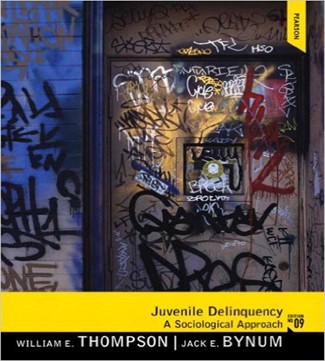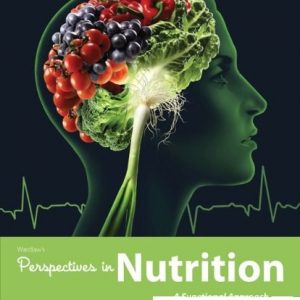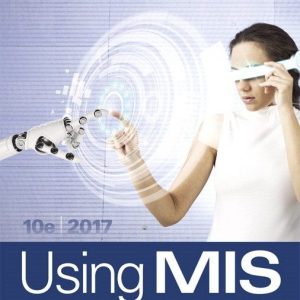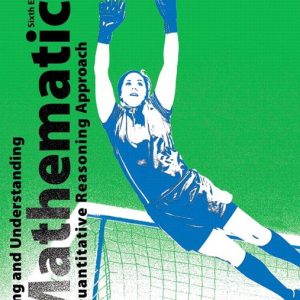Instant download Juvenile Delinquency 9th Edition Thompson Bynum Test Bank pdf docx epub after payment.

Product Details:
- ISBN-10 : 0205246532
- ISBN-13 : 978-0205246533
- Author:
Taking a sociological approach, this text discusses delinquency as it relates to and emerges from the youth’s family, neighborhood, school, peer group, social class, and overall cultural and social environment. The authors incorporate contributions from sociologists, psychologists, social workers, criminologists, and other specialists, who have sought to understand, explain, control, and prevent juvenile delinquency.
Table of Content:
I. MULTIPLE CHOICE
1. Franz Joseph Gall’s system was called __________.
a. phrenology* (p. 62)
b. social psychology
c. intrinsic sociology
d. microbiology
2. The first organized inquiry and hypothesis regarding criminal deviance emerged in the __________.
a. sixteenth century
b. seventeenth century
c. eighteenth century* (p. 62)
d. none of the above
3. What type of an approach did the Enlightenment writers propound?
a. simplistic
b. religious
c. economic
d. naturalistic* (p. 62)
4. Classical theorists were guided by the assumption that humans are ___________.
a. educated
b. religious
c. political animals
d. rational* (p. 62)
5. According to Graeme Newman’s The Punishment Response (1978), appropriate punishment “to suit the crime” would __________.
a. result in the elimination of the Juvenile court system altogether
b. not only encourage the reformation of offenders, but discourage criminality in the general populace*(p. 62)
c. only further encourage juveniles to break the law, as well as to hide their behavior better
d. jam up the court system so much that most juvenile offenders would be adults before their case was heard in court
6. Which of the following recognized that not all persons are equally rational and personally responsible for their behavior?
a. the Neoclassical school* (p. 62)
b. the “New School” of London
c. the Ecclesiastical School
d. the “Primary School”
7. When did the first efforts to apply scientific and systematic research methodology to establish the principle of biological determinism as the fundamental cause of criminal behavior come about?
a. during the Civil War
b. in the late nineteenth century* (p. 62)
c. in the early twentieth century
d. during the Great Depression
e. after World War II
8. Who is referred to as the “Father of Criminology”?
a. Franz Joseph Gall
b. The Roman Paulio
c. Jean Bodin
d. Cesare Lombroso* (p. 62)
9. Cesare Lombroso concluded that __________.
a. criminals are often handsome
b. individuals become criminals because of social factors
c. there is a born criminal* (p. 63)
d. criminals cannot be recognized
10. The premises, methodology, and conclusions of Lombroso and the Positivistic School of
Criminology have been __________.
a. totally ignored
b. accepted by most criminologists
c. adopted by all foreign scholars as definitive conclusions concerning the cause of criminal behavior
d. subjected to intense scrutiny and criticism by subsequent investigators* (p. 63)
11. A biological throwback to a savage, lower phase of human evolution is referred to as __________.
a. caveman
b. ativist *(p. 63)
c. positivist
d. aviary
12. Men with the rare cellular structure _________, are thought to be predisposed to violent, antisocial acts.
a. Darwinism
b. molecular disintegration
c. XYY chromosomes *(p. 66)
d. double-nucleus
13. A medical specialty concerned with the diagnosis, treatment, and prevention of disordered or abnormal behavior is ___________.
a. free association
b. psychiatry* (p. 74)
c. psychology
d. neurology
14. The __________ of delinquency views crime and delinquency as a social pathology similar to a physical or mental illness.
a. medical model*(p. 74)
b. psychogenic model
c. phrenology model
d. Freudian model
15. The legal and moral controversy regarding mental illness as it affects human behavior and
individual responsibility for one’s behavior is __________.
a. not new* (p. 74)
b. without controversy
c. new
d. legally important
16. In which century did scholars begin to accumulate new and important knowledge about human anatomy, physiology, neurology, chemistry, and general medicine?
a. seventeenth
b. eighteenth
c. nineteenth* (p. 74)
d. twentieth
17. Psychiatry and psychology __________.
a. are identical
b. perceive human behavior as originating with economic problems
c. are independent fields of study which have much in common* (p. 74)
d. ignore each other in terms of contributions
18. Whose pioneering work laid the foundation for the twentieth century psychological approach to understanding and explaining human behavior?
a. John Ellenberger
b. Karl Marx
c. Sigmund Freud* (p. 75)
d. Robert Rabin
19. According to Freud, humans suffer mental conflict because of __________.
a. a lack of economic security
b. inadequate religious training
c. too much religious training
d. desires and needs that are repressed* (p. 75)
20. The unique organization of relatively stable psychological traits possessed by an individual, as revealed by one’s interaction with people, events, situations, and other components of the environment, is referred to as __________.
a. deviant behavior
b. normal behavior
c. personality* (p. 75)
d. social indifference
21. How many fully developed components are characteristic of the normal adult personality?
a. two
b. three* (p. 75)
c. four
d. five
22. A set of primitive, self-centered impulses and instincts is referred to as the __________.
a. id* (p. 76)
b. superego
c. ego
d. loco
23. Freud’s theoretical contributions __________.
a. have not been noticed
b. are non-controversial
c. have guided countless psychogenic efforts* (p. 76)
d. are no longer noted in universities
24. The consistent application by the American Psychiatric Association of the medical model on behavior is reflected in the usage of such terms as __________.
a. conduct disorder diagnosis and the later stages*(p. 78)
b. bullies, victims, and interlopers
c. adults, adolescents, children and juveniles
d. normal childhood behavior and boys will be boys
25. The __________ has a “flawed personality” in the sense that he or she has failed to internalize some of the major values and norms of society.
a. typical adolescent
b. psychopath *(p. 79)
c. parent
d. law-enforcement officers
II. TRUE-FALSE
26. The Classical theorists were guided by the assumption that human are irrational. True or False? (False, p. 62)
27. According to Graeme Newman’s The Punishment Response (1978), appropriate punishment “to suit the crime” would not only encourage the reformation of offenders, but discourage criminality in the general populace. True or False? (True, p. 62)
28. The Classical/Neoclassical approach has been severely criticized. Its’ fatal flaw lay in overlooking how society is a major force in shaping human behavior. True or False? (True, p. 62)
29. The first efforts to apply scientific and systematic research methodology to establish the principle of biological determinism as the fundamental cause of criminal behavior occurred in the late nineteenth century. True or False? (True, p. 62)
30. Franz Joseph Gall is often referred to as the “Father of Criminology.” True or False? (False, p. 62)
31. Cesare Lombroso concluded that there is a born criminal. True or False? (True, p. 63)
32. Food additives and preservatives are now suspected of causing aberrant behavior. (True, p. 68)
33. Dyslexia is a brain malfunction in which colors and shapes are perceived as sounds. (False, p. 70)
34. The pioneering work of Sigmund Freud laid the foundation for the twentieth-century psychogenic approach to understanding and explaining human behavior. True or False? (True, p. 76)
35. The most ambitious and intensive form of psychotherapy is represented by Marxian psychoanalysis. True or False? (False, p. 76)
III. FILL IN THE BLANK
36. Franz Joseph Gall’s system was called __________. (phrenology, p. 62)
37. Cesare Beccaria, Jeremy Bentham, and other enlightenment writers propounded a __________ approach to explaining criminal behavior by contending that the only acceptable explanations for human conduct are to be found in man himself. (“naturalistic”, p. 62)
38. The __________ School recognized that not all persons are equally rational and personally responsible for their behavior. (Neoclassical, p. 62)
39. __________, an Italian army physician is often referred to as the “Father of Criminology.” (Cesare Lombroso, p. 62)
40. __________ is a biological throwback to a savage, lower phase of human evolution. (Atavism, p. 63)
41. __________ and associates equated personality and character with bold type and contended that youths with a certain physical appearance have an inherited and enhanced potential for delinquent behavior. (William Sheldon, p. 63)
42. Just as Charles Darwin traced the evolution of __________, sociobiologists attempt to do the same for social behaviors. (physical traits, p. 71)
43. __________ is a medical specialty concerned with the diagnosis, treatment, and prevention of disordered or abnormal behavior. (Psychiatry, p. 74)
44. Psychiatrists apply a __________ to delinquency. (medical model, p. 74)
45. Psychiatric and psychological contributions to the study of juvenile delinquency combine to form the __________ approach. (psychogenic, p. 75)
IV. ESSAY QUESTIONS
46. Discuss the implication of the Classical and Neoclassical Schools and indicate why they have been severely criticized.
47. Comment on the importance of Cesare Lombroso to criminology. What did he suggest about criminals?
48. Identify and contrast three distinct body types recognized by William Sheldon.
49. Demonstrate how psychiatry and psychology have much in common.
50. Discuss Freudian Theory as an explanation of crime and delinquency.
People Also Search:
juvenile delinquency
juvenile delinquency thompson bynum
juvenile delinquency 9th edition thompson bynum
juvenile delinquency 9th edition
juvenile delinquency 9th edition testbank download pdf
juvenile delinquency 9th edition download scribd





